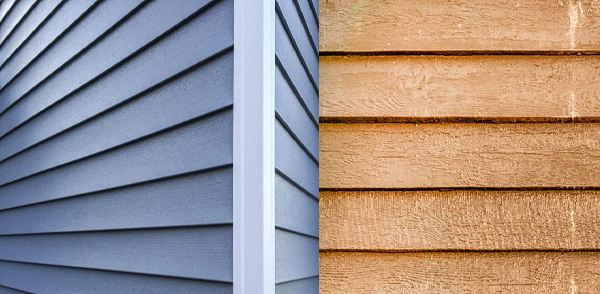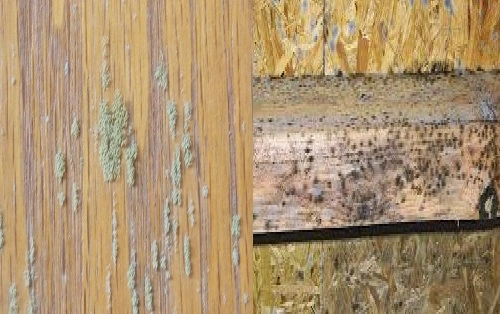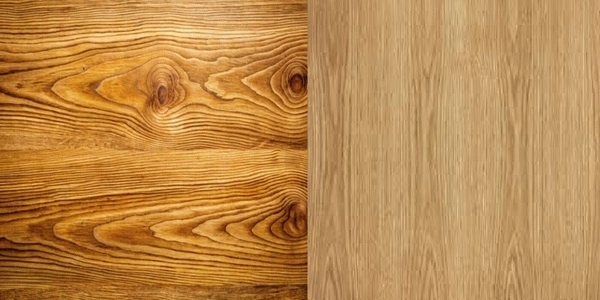Choosing the right siding for your home is a critical decision that affects its curb appeal, durability, and overall value. Two popular options for exterior cladding are vinyl siding and wood siding, each with its own set of advantages, disadvantages, and ideal applications. Understanding their differences can help you make an informed choice that suits your aesthetic preferences, maintenance needs, and budget.
This article provides an in-depth comparison of vinyl siding and wood siding, exploring their characteristics, benefits, drawbacks, and factors to consider when making your decision.
What is Vinyl Siding?
Vinyl siding is a synthetic material made from polyvinyl chloride (PVC). It is widely used in residential construction due to its affordability, low maintenance, and variety of styles.
Key Characteristics of Vinyl Siding:
1. Durability: Resistant to moisture, insects, and rot.
2. Appearance: Available in a wide range of colors, styles, and textures that mimic the look of wood or other materials.
3. Maintenance: Requires minimal upkeep, typically just periodic washing.
4. Cost: One of the most affordable siding options available.
What is Wood Siding?
Wood siding is a traditional cladding material made from natural timber. It comes in various styles, including clapboard, shingles, and board-and-batten, offering a classic and timeless look.
Key Characteristics of Wood Siding:
1. Durability: With proper maintenance, wood siding can last for decades.
2. Appearance: Offers a natural, authentic look that is unmatched by synthetic materials.
3. Maintenance: Requires regular painting, staining, and sealing to prevent rot and insect damage.
4. Cost: Typically more expensive upfront and requires ongoing maintenance costs.
Comparison of Vinyl Siding and Wood Siding
| Feature | Vinyl Siding | Wood Siding |
|---|---|---|
| Appearance | Wide variety of colors and styles; can mimic wood | Natural, authentic look; customizable with stains or paints |
| Durability | Highly resistant to moisture, rot, and insects | Susceptible to rot, insects, and warping if not maintained |
| Maintenance | Low maintenance; periodic cleaning needed | High maintenance; requires regular sealing, painting, or staining |
| Cost | Affordable upfront; minimal long-term costs | Expensive upfront; higher maintenance costs |
| Eco-Friendliness | Made from PVC; not biodegradable | Renewable, biodegradable material |
| Longevity | 20–40 years, depending on quality | 30–100 years with proper care |
| Installation | Lightweight and easy to install | More labor-intensive to install |
| Energy Efficiency | Requires additional insulation for energy efficiency | Naturally insulating; can reduce energy costs |
Advantages of Vinyl Siding
1. Cost-Effective:
- Vinyl siding is one of the most budget-friendly siding options, with low material and installation costs.
2. Low Maintenance:
- Unlike wood, vinyl does not need to be painted, stained, or sealed. A simple wash with soap and water keeps it looking fresh.
3. Weather Resistance:
- Vinyl siding is impervious to moisture, rot, and pests, making it ideal for regions with high humidity or frequent rainfall.
4. Versatility:
- Available in a wide range of colors, styles, and textures, including options that mimic the look of wood.
5. Long Lifespan:
- With proper care, vinyl siding can last 20–40 years.
Drawbacks of Vinyl Siding:
1. Synthetic Appearance: Despite advances in design, some homeowners feel that vinyl lacks the authenticity of real wood.
2. Susceptibility to Cracking: Vinyl can crack or become brittle in extreme cold.
3. Fading: Over time, the color may fade, particularly in regions with intense sunlight.
Advantages of Wood Siding
1. Timeless Beauty:
The natural look of wood siding adds character and warmth to any home, enhancing curb appeal.
2. Customizable:
Wood can be painted or stained in any color, allowing homeowners to change the look of their home as desired.
3. Eco-Friendly:
Wood is a renewable and biodegradable material, making it an environmentally friendly choice.
4. Longevity:
With proper maintenance, wood siding can last for generations, often outlasting other materials.
Drawbacks of Wood Siding:
1. High Maintenance: Requires regular upkeep to protect against rot, pests, and weather damage.
2. Cost: Wood siding is more expensive upfront and involves ongoing maintenance costs.
3. Vulnerability to Elements: Wood is susceptible to moisture, rot, and insect infestations without proper treatment and care.
When to Choose Vinyl Siding?
1. Budget Constraints:
If you’re working with a tight budget, vinyl siding offers a cost-effective solution without sacrificing durability.
2. Low Maintenance Preference:
Ideal for homeowners who want a durable siding option with minimal upkeep.
3. Weather Resistance:
Best for regions with high humidity, frequent rainfall, or extreme temperatures.
Best Applications for Vinyl Siding:
- Suburban homes
- Rental properties
- Large-scale developments
When to Choose Wood Siding?
1. Aesthetic Priorities:
If you value natural beauty and a timeless look, wood siding is the better choice.
2. Long-Term Investment:
Homeowners willing to invest in maintenance for a durable and elegant exterior will benefit from wood siding.
3. Eco-Conscious Projects:
Ideal for those who prioritize sustainable and biodegradable materials.
Best Applications for Wood Siding:
- Historic homes
- Luxury properties
- Custom-built homes
Cost Comparison
1. Vinyl Siding:
- Material Cost: $2–$7 per square foot
- Installation Cost: $4,000–$15,000 for an average home
- Maintenance Cost: Minimal
2. Wood Siding:
- Material Cost: $5–$10 per square foot
- Installation Cost: $10,000–$25,000 for an average home
- Maintenance Cost: Higher due to regular sealing, painting, or staining
Conclusion
Both vinyl siding and wood siding are excellent choices for home exteriors, but they cater to different priorities and budgets. Vinyl siding is affordable, low-maintenance, and durable, making it ideal for homeowners who value convenience and cost-effectiveness. Wood siding, on the other hand, offers unmatched natural beauty, customization, and longevity for those willing to invest in upkeep.
When choosing between the two, consider your budget, aesthetic preferences, climate, and willingness to maintain the siding. Whether you opt for the modern versatility of vinyl or the timeless charm of wood, both options can enhance your home’s value and curb appeal when properly installed and cared for.


